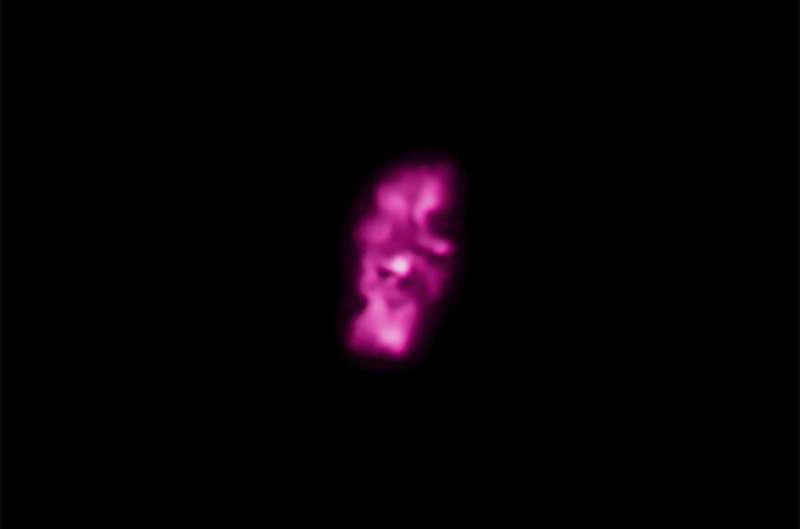More specifically, colors toward the red end of the rainbow are heard as low tones while colors towards purple are assigned to higher ones. Light that appears bright white in the image is heard as white noise. The wide range of musical frequencies represents the full range of X-ray frequencies collected by Chandra of this region. In the visual color image, this large frequency range in X-rays had to be compressed to be shown as red, green, and blue for low, medium, and high-energy X-rays. Played as sound, however, the full range of data can be experienced. As the piece scans upward, the stereo position of the sounds can help distinguish the position of the sources from left to right.
Cat's Eye nebula
When a star like the Sun begins to run out of helium to burn, it will blow off huge clouds of gas and dust. These outbursts can form spectacular structures such as the one seen in the Cat's Eye nebula. This image of the Cat's Eye contains both X-rays from Chandra around the center and visible light data from the Hubble Space Telescope, which show the series of bubbles expelled by the star over time. To listen to these data, there is a radar-like scan that moves clockwise emanating from the center point to produce pitch. Light that is further from the center is heard as higher pitches while brighter light is louder. The X-rays are represented by a harsher sound, while the visible light data sound smoother. The circular rings create a constant hum, interrupted by a few sounds from spokes in the data. The rising and falling pitches that can be heard are due to the radar scan passing across the shells and jets in the nebula.
Messier 51
Messier 51 (M51) is perhaps better known by its nickname of the Whirlpool Galaxy because its face-on orientation to Earth reveals its wound-up spiral arms. This gives telescopes here a view of another spiral galaxy similar to our Milky Way, whose structure we cannot observe directly from our position within it. As with the Cat's Eye, the sonification begins at the top and moves radially around the image in a clockwise direction. The radius is mapped to notes of a melodic minor scale. Each wavelength of light in the image obtained from NASA telescopes in space (infrared, optical, ultraviolet, and X-ray) is assigned to a different frequency range. The sequence begins with sounds from all four types of light, but then separately moves through the data from Spitzer, Hubble, GALEX, and Chandra. At wavelengths in which the spiral arms are prominent, the pitches creep upwards as the spiral reaches farther from the core. A constant low hum associated with the bright core can be heard, punctuated by short sounds from compact sources of light within the galaxy.
These sonifications of the Deep Field, Cat's Eye and Whirlpool galaxy were led by the Chandra X-ray Center (CXC). The collaboration was driven by visualization scientist Dr. Kimberly Arcand (CXC), astrophysicist Dr. Matt Russo and musician Andrew Santaguida (both of the SYSTEM Sound project).
Explore further



